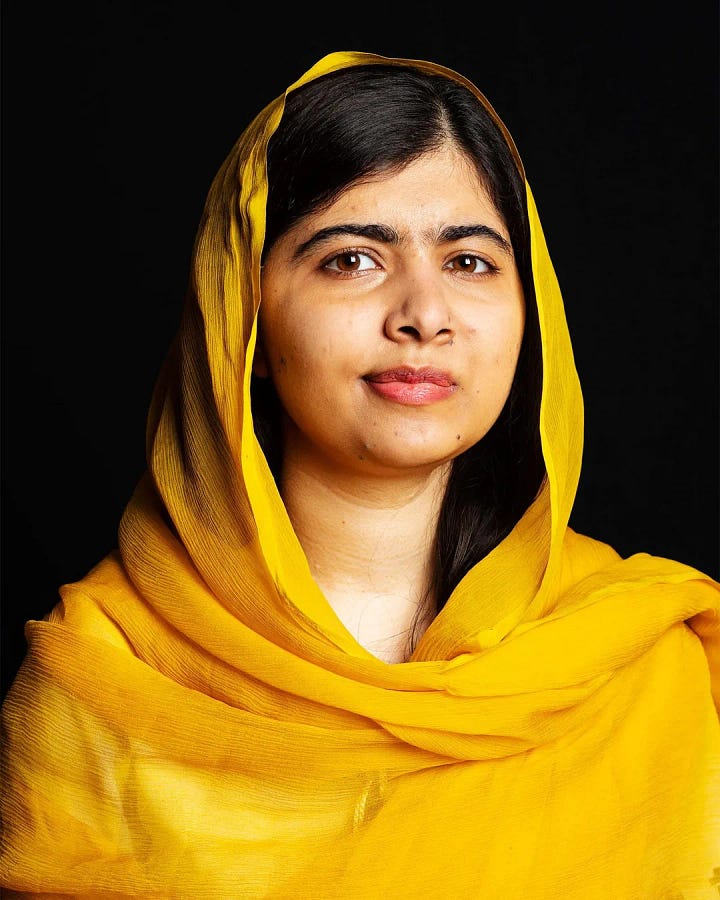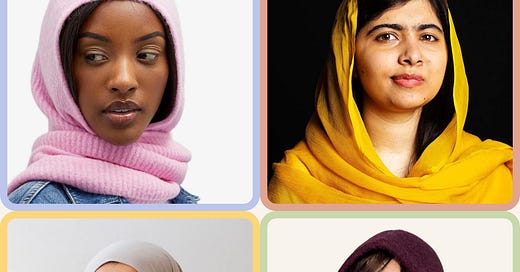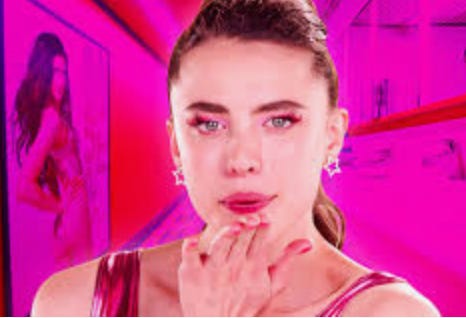The Irony of the Balaclava as a Fashion Statement
Observations, trends, and personal stories by a Femmelennial – that's what you'll find here📖
Goodmorning! I hope you all had a wonderful weekend, filled with joyful preparations for the holidays. Facing the cold in Amsterdam, I’ve been trying out my latest winter essential: the balaclava. Bala…what? Don’t worry, I’ll explain everything in this week’s blog, where I also share my reflections on its cultural significance.
And that's not all—I’ll also be sharing my thoughts on some series and movies I’ve watched recently, perfect for curling up and enjoying during the holiday season.
Enjoy reading, and an early Merry Christmas!
Bisous!
Mekky
The Irony of the Balaclava as a Fashion Statement
FEMMELENNIAL BLOG
The balaclava is everywhere this season. One scroll through Instagram, and you’ll spot influencers and models wrapped in this winter’s hottest fashion statement. And I admit, as soon as my eye fell on this garment, I, like many others, fell for it. But here’s the thing—while the balaclava is being embraced as a symbol of casual, high-fashion chic, there’s a layer of irony that’s impossible to ignore.
Picture this: women in balaclavas are celebrated as bold trendsetters, yet women wearing veils in the same societies must often fight for acceptance. Funny, isn’t it? Or maybe it’s just sad. Let’s shed some light on the uncomfortable truth behind this fashionable contradiction.
A Controversial Evolution
While researching for this blog, I stumbled upon an interesting article in the Guardian from 2022. It highlighted how the balaclava trend first gained popularity among men, with its historical ties to criminality, violence, and even sexual aggression.Feminists and women’s rights groups at the time labeled the trend “irresponsible” and “inappropriate,” arguing it made women feel unsafe and vulnerable.
Fast-forward to 2024, and the balaclava has undergone a complete rebranding. No longer confined to men, it has evolved into a winter wardrobe staple for women, celebrated for its chic, mysterious allure. High fashion brands like Prada and Balenciaga have embraced it. This shift left me wondering: how did a garment once criticised for making women feel unsafe transform into a celebrated fashion statement among women? And what does this say about the fashion industry’s ability to rewrite narratives?




The Double Standard
The same question arises in a different context. The balaclava, when worn by a woman, covers her hair and neck area—much like a veil does. Yet, here’s where it gets intriguing: while the balaclava is hailed as a high-fashion, edgy, and capitalist-driven trend, the veil is often viewed as a symbol of oppression and control. While a woman in a balaclava is fashionable and stylish, a woman in a veil is treated as ‘the other’.
This contradiction exposes how society assigns value to clothing based on who wears it and how it’s marketed. The balaclava is stripped of any cultural or historical significance, allowing it to exist purely as a fashion statement. In contrast, the veil remains used in political, cultural, and religious narratives that Western societies often struggle—or refuse—to accept.
But this contradiction raises an important question: can fashion truly have the power to bridge cultural divides and challenge the inequalities that persist in how women’s choices are perceived?
Where Do We Go From Here
A while ago, I wrote about “Why Intersectional Feminism is the Only Feminism That Matters,” arguing that true equality requires embracing the diverse experiences women face. Fashion, I believe, can be a powerful tool for change, fostering connections.
The balaclava is a reminder that what we wear sends a message—about our identity, our choices, and the world we want to live in. While women challenged the balaclava when it felt threatening, there’s silence in standing with veiled women.
Conclusion
So, the next time you scroll past another chic balaclava or another fashion trend, pause for a moment. Ask yourself: what story does this trend tell? Whose narratives are being celebrated, and whose are being silenced? And how can we, as consumers, use our choices to advocate for inclusivity and solidarity in fashion?
FEMMELENNIAL - CULTURE
Usually, I don’t have the time or patience for movies or multi-episode documentaries. But perhaps it’s the grey winter sky or a sign that I am in a more chill-down-era, either way, I’ve recently indulged in a few films and a documentary that I would like to share with you.
AI Love. The trailer of this documentary caught my when I saw a man speaking to his AI-girlfriend Aiva. Another woman with limited vision showed how AI had enriched her engagement with the world around her. And another man shared how he uses AI to increase his time on this planet, because “life is beautiful, but too short.” as he explains. This documentary, available on NPO Start, was a recommended watch—well worth every moment I spent on it.
The Substance. Intrigued by the theme of lifelong youth and beauty, I decided to watch The Substance despite my friend’s warning of disappointment. I expected an intellectual take on a deeply relevant topic, exploring the consequences of such a desire. Instead, the movie devolved into a horror spectacle, filled with unnecessary blood and shocking scenes that detracted from the story’s potential depth. Was it worth my time? Not really. But given the hype, I’m glad to at least understand what everyone is talking about—even if I don’t share their enthusiasm.
Black Doves. A thrilling six-episode spy series on Netflix that kept me hooked throughout. Keira Knightley delivers an incredible performance, portraying a 39-year-old character with authenticity—visible fine lines and all (I came across a lot of comments on this online even before watching the series). For me it was a perfect mix of action, suspense, and drama, and therefore a must-watch!
Gladiator II. While Gladiator II had its moments, it didn’t quite capture the same level of excitement as the first film. The story was solid but predictable, and the use of advanced technology to enhance the arena fights didn’t add much value for me. The inclusion of fantasy creatures, like baboons, felt unnecessary—after all, the raw brutality of the arena was already horrifying enough. That said, the movie is still worth watching, especially if you temper your expectations. Just don’t expect it to surpass the brilliance of the original.
FEMMELENNIAL - CULTURE
And finally, a few snapshots capturing the magical holiday vibes of Paris in December.
Please share your feedback and comments, I would love to hear your thoughts about my newsletter.
Lots of Love,
Mekky







